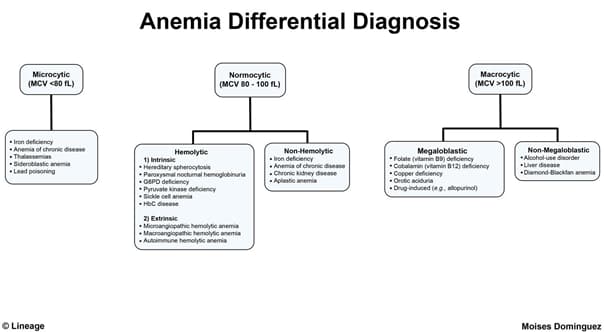Snapshot
- A 40-year-old woman with rheumatoid arthritis has felt tired and weak for several months. She attributed this to her autoimmune disease. However, in the past week, she has begun feeling very short of breath even walking to the grocery store; something she was able to do easily before. Her husband also noticed that she has been very pale. On physical exam, she has conjunctival pallor but an otherwise baseline physical exam. Laboratory results reveal anemia, decreased serum iron, increased ferritin, and decreased TIBC.
Introduction

- Anemia of chronic disease resulting from decreased red blood cell production is a
- normochromic, normocytic anemia
- Pathogenesis
- iron is stored in macrophages or bound with ferritin
- Associated conditions
- chronic infection
- longstanding malignancy
- Prognosis
- varied based on underlying inflammatory condition
Presentation
- Symptoms of anemia
- generalized weakness
- fatigue
- headache
- shortness of breath
- Physical exam
- pallor
- tachycardia
Evaluation

- Labs
- ↑ ferritin
- ↓ serum iron
- ↓ TIBC, transferrin saturation, and MCV
- Peripheral blood smears
- normochromic RBCs
- may be normocytic or microcytic
- basophilic stippling
- can be seen in alcohol abuse, lead poisoning, thalassemias, and hereditary pyrimidine 5′-nucleotidase deficiency
Differential Diagnosis
Treatment
- Treat underlying disease
- If underlying disease is unknown or treatment of underlying disease does not improve symptomatic anemia
- measure EPO
- if low, administer EPO or erythropoiesis-stimulating agents (ESAs)
- make sure iron stores (ferritin) are sufficient
- if low, administer EPO or erythropoiesis-stimulating agents (ESAs)
- measure EPO
- if insufficient, patients may be resistant to EPO
Complications
- Severe anemia



